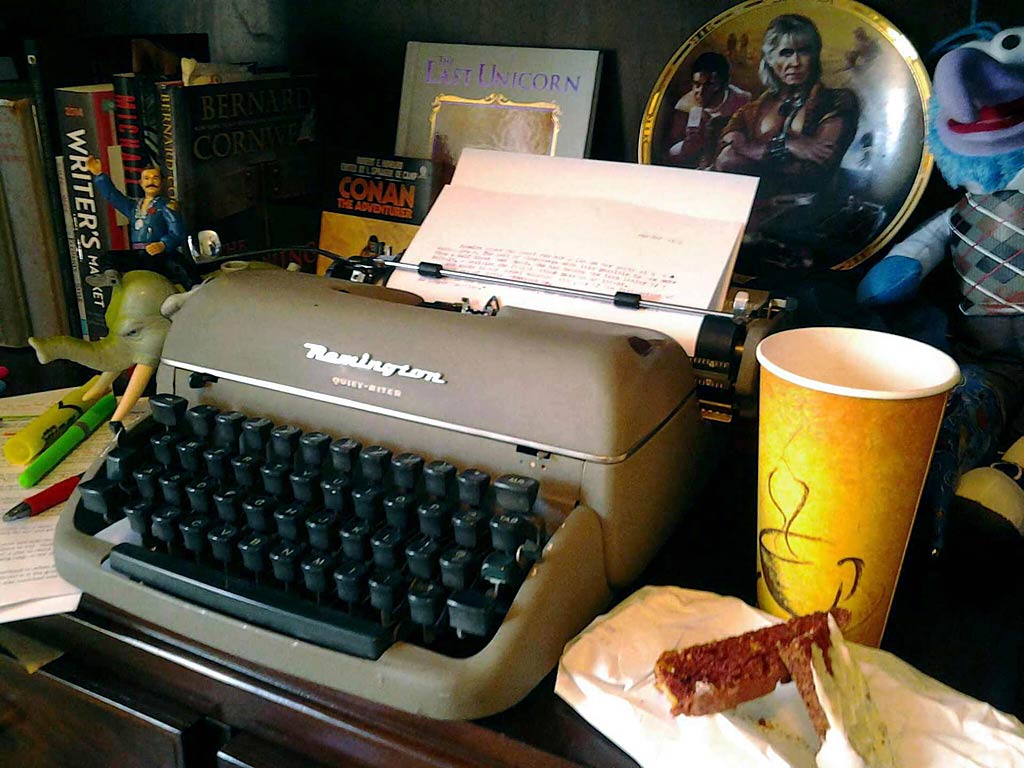Let’s do an exercise;
Pick a movie or comic you enjoy.
Doesn’t have to be your favorite—something you’ve memorized since you were fifteen—just something you’re familiar with…
ok, got it?
Now, describe to me the fourth scene and the fifth scene from the end.
…
…
If you’re like most folks, odds are you can’t with any accuracy.
Now, take that same movie or comic and try and tell me the very opening scene and very final scene… a bit easier right?
In fact, I bet you could rattle off quite a few opening and closing scenes if you put your mind to it.
This fantastic display of recall is not as miraculous as it might seem. While we’d hope the opening and closing of a story makes an impression creatively (something I discuss in detail in Opening Scenes), why this recall takes place is really a matter of logistics—it’s the first and last thing your brain associates with the story.
I’m no psychologist or neuroscientist, so there may be a more accurate association or term for this phenomenon, but I’m gonna roll the dice and say it has something to do with “Serial-Position Effect.” A theory put forth by German psychologist, Hermann Ebbinghaus, which in a nutshell says, “In a series of information, humans remember the last thing best, first thing pretty well and middle things worst.”
So even without consciously placing any deliberate emphasis on the first and last scene in a comic script, the universe says otherwise.
Those of you who frequent my site, are thinking ahead and probably already know where this is going…
In writing, anytime we identify a point where the reader is focusing their attention, we identify an opportunity to support the narrative.
Now, I’ll be first to admit that only a small portion of the readership population will ever actively reread and compare opening and end scenes to discover your fancy writer tricks.
For everyone else, it will merely be subtextual suggestion.
But don’t be so quick to dismiss that suggestion.
If you’re writing to entertain, to engage, and to grow yourself as a writer, I highly recommend always taking some time—to at least consider—how you can use these two key scenes to work in your favor. Never leave money on the table.
So how exactly do you take advantage?
First, recognize that the first and last scenes are not completely separate, totally detached from one another. They are in fact, siblings—there to be compared and contrasted against one another.
Of course, there’s no wrong or right way to do it.
It’s all about what message you want to convey.
And there’s nothing to say that a visual juxtaposition in one of the core comic panel elements, or elements of story will stand out and make more of an impression than any other one.
That said, keep in mind it’s all about contrast and change (or lack thereof).
We’re talking about the opening and closing of your story—by the closing scene, at which point the complete story transformation (protagonist character arc, thematic expression, etc.) has taken place.
If you’re opening and closing on nearly identical scenes, with no significant changes, in a way, you’re actually undoing the entire story. “Yeah that whole story you just watched took place, but look, nothing’s really changed.” (Nothing wrong with saying that message, if that’s what you want to say of course.)
While you can deliver any message you want via the comparison and contrast of the first and last scenes, most of the time you’ll probably be working around Master Theme reinforcement.
Since Master Theme is, by it’s nature, is somewhat complex—I’m a smack the first person who shouts “love” or “revenge”—don’t get to hung up on capturing the theme exactly, but instead express it (or the underlying essence of it) more abstractly.
This is where the heavy weight hitter, Symbolism often comes in. Injecting symbolism
that reflects a clear change from first to last scene, reflective of the story theme, allows you to say more with less words. It also allows a bit of interpretation on the reader’s part, which engages them longer.
Everyone is a bit familiar with symbolism as we use it so often in our daily lives. (The Advanced Class Article on the Symbolism goes into more precise usage for those who want to explore the topic more. Of course, there are tons of books on the subject too.)
A good time to answer a question.
If your master theme is putting fourth a question, the first/last scene duality may be a great time to slip in your take on the answer. Or, perhaps some other big question raised within the context of the story.
For example, let’s say it’s hinted that a major key character was killed during the story, but never verified. Someone you know the readers connected to. Why not slip them a parting nugget, let them know if they should be buying roses or planning the celebration for the sequel. The message you convey can be anything… as long as it’s relevant.
Earlier in the article I said this is a great exercise to grow as a comic writer (After all you don’t learn if you don’t do stuff), but more than that, if you take the time to really start analyzing how to tell a message—a “mini-story” as it were—between these two scenes…
you’ll be paying attention to all the fundamental mechanics to comics. And at some point you may realize these techniques go far beyond the first and last scene.▪
About the Author —
Nick Macari is a full-time freelance story consultant, developmental editor and writer, working primarily in the independent gaming and comic markets. His first published comic appeared on shelves via Diamond in the late 90’s. Today you can find his comic work on comixology, amazon and in select stores around the U.S. Visit NickMacari.com for social media contacts and news on his latest releases.
